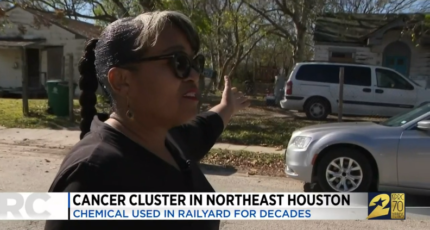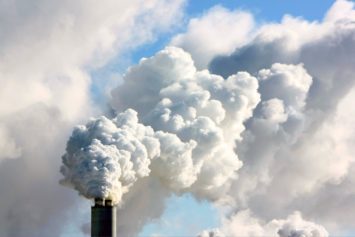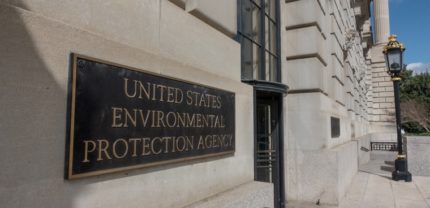Established in 1970 under the Nixon administration, the United States Environmental Protection Agency has worked to maintain and enforce national standards set by environmental laws and regulations. But while the agency has made undeniable strides, there are those that have yet to feel its full benefits, most notably African-Americans.
In a new EPA study conducted by the National Center for Environmental Assessment, researchers discovered that, regardless of wealth, Black Americans are exposed to 1.54 times more air pollution than their white counterparts, resulting in higher incidences of ailments like lung and heart disease.
Published by the American Public Health Association, the study concluded that communities located within half a mile of refineries and oil wells — most notably Black communities — are exposed to higher rates of particulate pollution on average, which they found to be true in every state except Maryland, New Mexico, North Dakota, as well as Washington D.C.
According to the study, small pollution particles, assessed by the study as particulate matter of 2.5 microns or smaller, are found in higher concentrations throughout Black neighborhoods. “Blacks, specifically, had 1.54 times higher burden than did the overall population. These patterns were relatively unaffected by sensitivity analyses, and disparities held not only nationally but within most states and counties as well.”
For years, environmental racism has largely gone unchecked, often placing African-Americans in closer proximity to dangerous pollution and air emissions, while poverty has ensured that those without the means to escape have often been forced to remain in such conditions.
The EPA findings echo a similar study published last year by the Clean Air Task Force and the NAACP titled “Fumes Across the Fence Line” in which researchers also discovered that “The life-threatening burdens placed on communities of color near oil and gas facilities are the result of systematic oppression perpetuated by the traditional energy industry, which exposes communities to health, economic and social hazards.”
After identifying that 6.7 million Black Americans currently live in the 91 counties that currently house such refineries, the study also concluded that “As a result, many African-American communities face an elevated risk of cancer due to air toxics emissions from natural gas development.”
The study authors add, “The air in many African American communities violates air quality standards for ozone smog. Rates of asthma are relatively high in African American communities.”
In setting context for how so many Black Americans have come to face these elevated pollution exposures, the study says, “It is not a coincidence that so many African Americans live near oil gas development. Historically, polluting facilities have often been sited in or near African American communities. Companies take advantage of communities that have low levels of political power. In these communities, companies may face lower transaction costs associated with getting needed permits, and they have more of an ability to influence local government in their favor.”
Black children are especially vulnerable to these dangers, with more than 138,000 affected by asthma attacks each year, resulting in more than 100,000 missed days from school. Quite a high price to pay simply for being born into the wrong neighborhood.
It’s an issue that Doris Browne, president of the National Medical Association, described to Inside Climate News as “We have a real problem with air. We think it’s just a little smog and fog, but we need to worry about the pollutants in the air we’re breathing.”
For some, these studies simply confirm what they’ve already known for years, as Black residents in cities like Beaumont, Texas, have continued to fight against companies like Exxon that have continued to pump-cancer causing toxins into their communities, as detailed in 2017 the Intercept.
Under Trump’s EPA chief Scott Pruitt’s leadership, the EPA has scaled back on issuing protections and regulations aimed at curbing or improving emission standards. Thanks to an executive order, the agency is no longer required to consider climate change (or its impact) when formulating policy decisions.
Still, many EPA researchers have largely remained impartial in the face of the politicization of their agency, resulting in a wave of studies that continue to confirm that environmental injustice is alive and well. The results of such studies are telling, as numerous reports — and landmark cases — continue to reinforce the fact that racial disparities continue to be a factor in those adversely affected by toxic air and pollution.
In response to the EPA’s latest study, Leslie Fields, the director of the Sierra Club’s Environmental Justice Program, released a statement that included their disappointment in the findings, writing, “It’s a travesty that the most vulnerable communities in our country must endure the worst air pollution and its health effect while Trump’s EPA administrator jets around the country in a first class seat, meeting with and encouraging the fossil fuel billionaires responsible for that pollution. This report illustrates how people of color and people with limited means have been grossly taken advantage of by polluters who don’t care about the misery they cause.”
The environmental exploitation of the disadvantaged and the perpetuation of the cycle of such disadvantage continues, with Fields summing up this issue the study captures by saying, “Locating polluting facilities in low-income neighborhoods and communities of color means that people with marginalized identities experience more asthma, a greater likelihood of heart attacks, even premature death. The disadvantages that come with those health issues, like missing school, create a cycle of poverty and lack of access to opportunity that spans generations and shapes every part of the experience of being a person of color or low-income person in the United States.”



